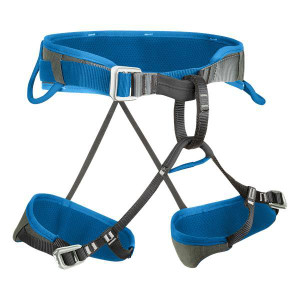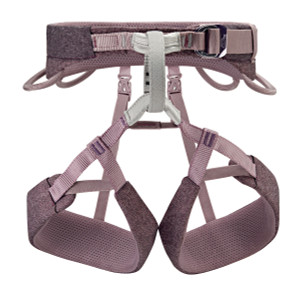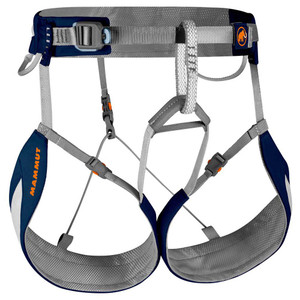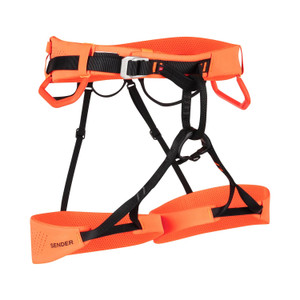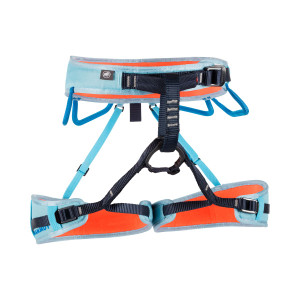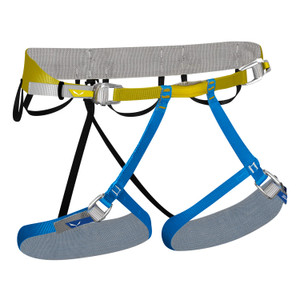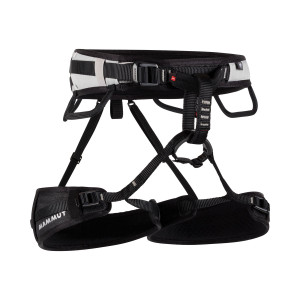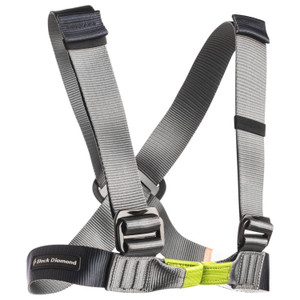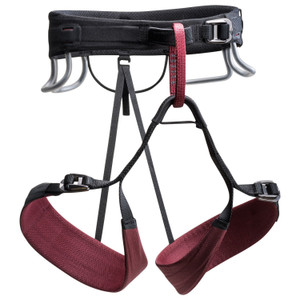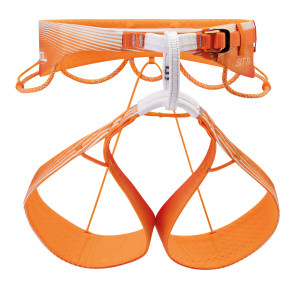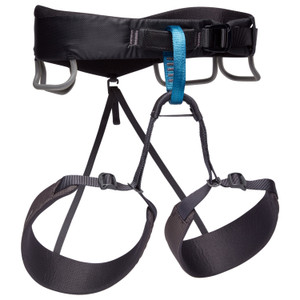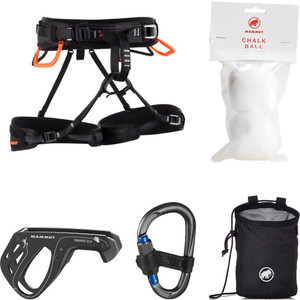Harnesses
A climbing harness is a piece of essential safety gear that connects you securely to a rope or anchor system during climbing, rappelling, or mountaineering. It distributes force in case of a fall and allows for comfortable weight bearing when hanging or belaying.
Main Purpose of a Climbing Harness:
-
Safety: Catches you if you fall.
-
Support: Lets you hang or rest mid-climb.
-
Connection: Attaches you to ropes, belay devices, or anchors.
Main Parts of a Climbing Harness:
| Part | Description |
|---|---|
| Waistbelt | Padded and adjustable; wraps around your waist just above the hips. |
| Leg loops | Go around your thighs for lower body support (some are adjustable). |
| Tie-in loops | Where you tie the rope directly using a knot. |
| Belay loop | Strong loop connecting the waist and leg loops; used for belaying and rappelling. |
| Gear loops | Non-load-bearing loops to hold carabiners, quickdraws, or gear. |
| Rear haul loop | Small loop on the back for a second rope or chalk bag. |
Types of Climbing Harnesses:
| Type | Best For | Features |
|---|---|---|
| Sport harness | Gym, sport climbing | Lightweight, fewer gear loops |
| Trad harness | Trad/multipitch climbing | More padding, extra gear loops |
| Ice/mountaineering harness | Alpine or ice climbing | Adjustable leg loops, fits over layers |
| Full-body harness | Kids, rescue, canyoning | Distributes weight across torso; prevents flipping upside down |
Choosing a Harness:
-
Fit: Should be snug around waist and thighs (you shouldn’t be able to pull it off over your hips).
-
Comfort: Padding matters, especially for longer climbs.
-
Weight: Lighter for sport, more padded for trad/multipitch.
-
Adjustability: Important for layering or sharing gear.
Safety Tip:
Always double back the waist belt buckle (unless it’s auto-locking), and tie in correctly using both tie-in loops — not the belay loop.
Would you like help picking a harness for gym climbing, outdoor trad, or alpine use?


